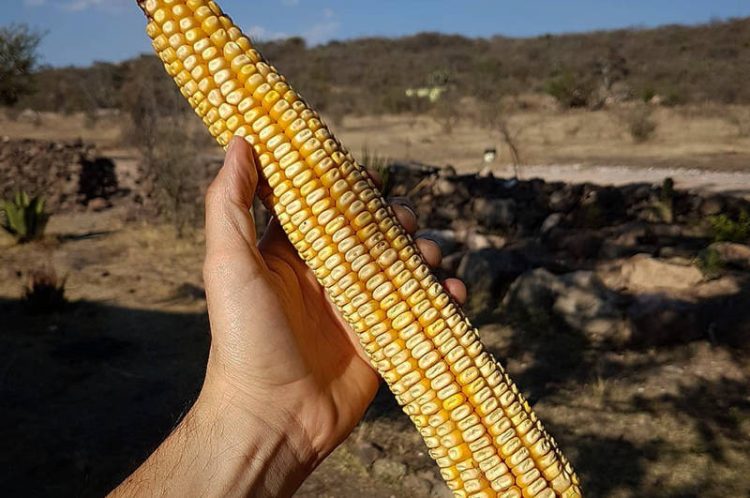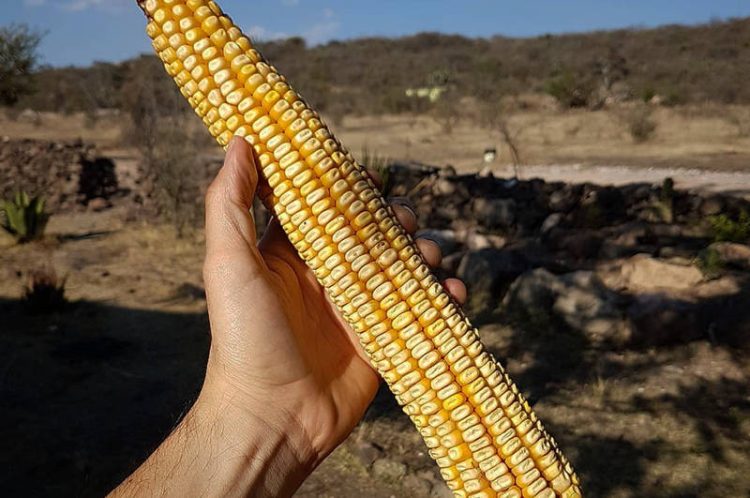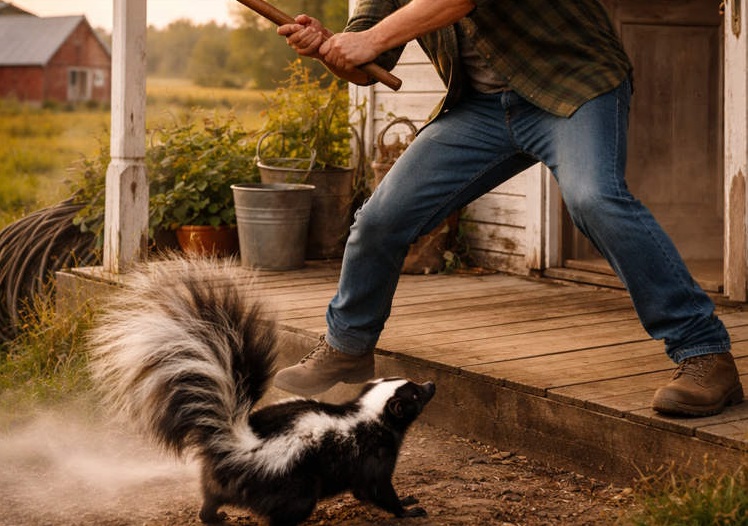Jala, a small town in the Mexican state of Nayarit, is famous as the home of the world’s largest ears of corn. The same species can be cultivated in other parts of the country, but it just doesn’t grow as big.
In 2019, the grower of the world’s largest ea of corn, a farmer named Jesús Nazario Elías Moctezuma, won the annual corn cob competition in Jala, Nayarit with a cob that measured 39.5 centimeters long. The runner-up lost by only half a centimeter, and most of the other participants weren’t far off either. They all compete with ears of corn from the Jala landrace, a “giant” species known for producing some truly humongous ears of corn. Unfortunately, as impressive as its cobs are in terms of size, the Jala landrace has been losing out against more mainstream species and is in danger of being lost forever.

Photo: Reddit
While 40-cm-long ears of corn are still considered huge, they are definitely not as long as they used to be. In 2016, a local farmer won the annual contest with a 45-cm-long cob, and scientific reports dating back to 1924 mention ears as long as 60 centimeters, and plants over 6 meters in height. But as the number of farmers growing it decreased, so did the size of the ears.
“The Jala maize landrace is unsuited to mechanization due to its size and agronomic requirements,” socioeconomic researcher Carolina Camacho said. “It must be sown by hand and, because the plant can grow to several meters or taller, the ears must be harvested on horseback.”
Despite the size of its ears and the prized floury texture, the truth is that the Jala landrace is losing out to more competitive and profitable varieties. And as more farmers switch to other species, the unique genetic pedigree of this legendary species gets diluted.
The real tragedy is that simply exporting the Jala landrace to other states or even other areas of Nayarit won’t yield the same humongous ears of corn. The species is already grown in neighboring states like Sinaloa and Jalisco, as well as in other parts of Nayarit, but it just doesn’t grow as large as it does in Jala, at the foot of Ceboruco volcano.













